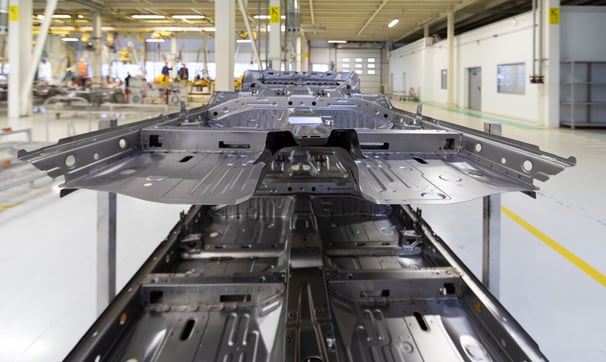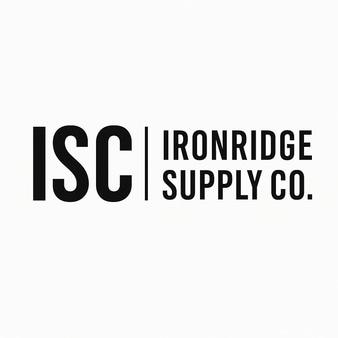Keeping Things Moving: Essential Conveyor System Parts and How to Maintain Them
TOOLING & MACHINING


Conveyor systems are the lifeline of many manufacturing and distribution operations. They move everything from small components to heavy loads across shop floors, warehouses, and processing plants. But when one component fails, the entire operation can grind to a halt.
Why Conveyor System Parts Deserve More Attention
Conveyors are often viewed as simple, low-maintenance systems. But behind the belt or rollers are dozens of components—bearings, motors, idlers, chains, sprockets, and more—that work in unison. If just one part wears down or fails, it can create backups, downtime, or even safety hazards.
By understanding these components and how to maintain them, you’ll reduce unplanned downtime, extend equipment life, and improve overall productivity.
Core Conveyor System Components
1. Conveyor Belts
The most visible and essential part of any belt-driven conveyor system. Available in rubber, PVC, polyurethane, and modular plastic, each material suits different environments—like high temperatures, food safety, or chemical exposure.
Signs of wear: Cracking, fraying, belt slippage
Maintenance tip: Regularly check tension and alignment
2. Rollers and Idlers
Support and guide the conveyor belt. Can be impact rollers, return rollers, or troughing idlers depending on the belt path and load.
Signs of failure: Excessive noise, wobbling, seized rotation
Maintenance tip: Inspect for debris buildup or bearing wear
3. Bearings
Used in rollers, pulleys, and motor mounts. Bearings reduce friction and wear but are also a major point of failure due to dust, lack of lubrication, or misalignment.
Signs of failure: Heat, noise, or drag
Maintenance tip: Use sealed bearings or follow regular greasing schedules
4. Motors and Gearboxes
Drive the conveyor. Most conveyors use electric motors paired with reducers or gearboxes to match speed and torque.
Signs of wear: Overheating, vibration, fluid leaks
Maintenance tip: Monitor amperage and vibration for early warning signs
5. Pulleys and Sprockets
Transmit drive motion to the belt or chain. Worn or misaligned pulleys can cause tracking issues and belt damage.
Maintenance tip: Check keyways and alignment regularly
6. Chains and Tensioners
In chain-driven systems, chains are used instead of belts. Tensioners ensure proper tension and minimize wear.
Signs of wear: Elongation, noise, inconsistent movement
Maintenance tip: Lubricate chains and inspect for stretching or rust
7. Sensors and Controls
Photoeyes, limit switches, encoders, and PLCs help automate movement and ensure safe operation.
Maintenance tip: Keep sensors clean and protected from vibration or impact
Preventative Maintenance Checklist
A few minutes of maintenance per week can save you hours of downtime. Here’s a quick list to keep your conveyors running:
Check belt tension and tracking weekly
Lubricate bearings and chains per manufacturer schedule
Inspect motor amp draw monthly
Clean debris from under rollers and guards
Listen for abnormal sounds during operation
Replace worn rollers or pulleys before failure
Spare Parts Strategy
One of the smartest moves any maintenance team can make is stocking critical spare parts. Downtime can cost thousands per hour—having a replacement motor or belt on hand can mean the difference between a quick fix and a production shutdown.
Smart spares to stock:
Conveyor belts or belt repair kits
Rollers and bearings
Motor and gearbox
Chains or sprockets
Control sensors or limit switches
Choosing the Right Conveyor Parts Supplier
Not all conveyor parts are created equal. Look for suppliers that:
Provide OEM and aftermarket options
Offer quick turnaround times and emergency shipping
Can help you spec replacements or upgrades
Carry parts for your specific conveyor brand
Final Thoughts
Your conveyor system is only as reliable as its weakest link. Understanding and maintaining the key components—belts, rollers, motors, and more—can keep your operation moving at full speed.
At Ironridge Supply Co., we stock high-quality conveyor parts for virtually every industrial system. Whether you're replacing rollers or upgrading motor drives, our team is here to help you get moving—and stay moving.
⚙️ Shop Conveyor System Parts
📞 Need Help Spec’ing a Part? Ironridge Experts Are Standing By
